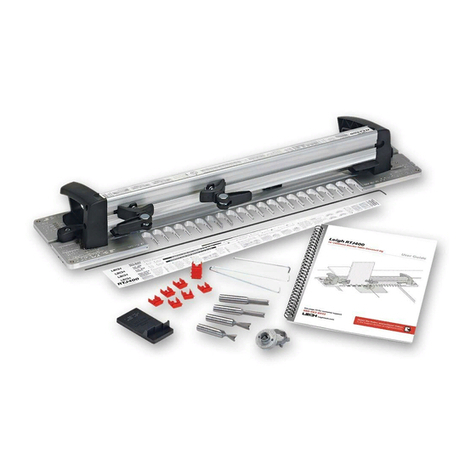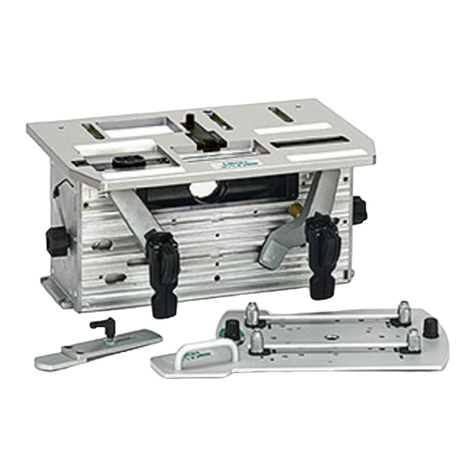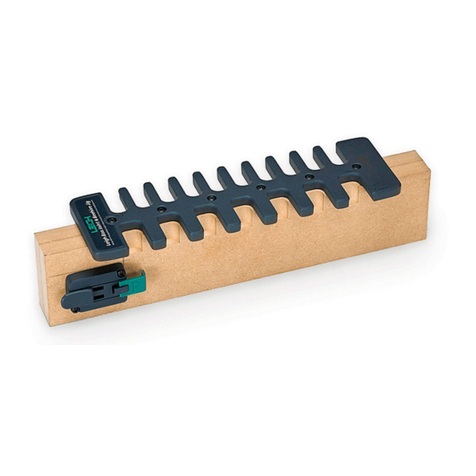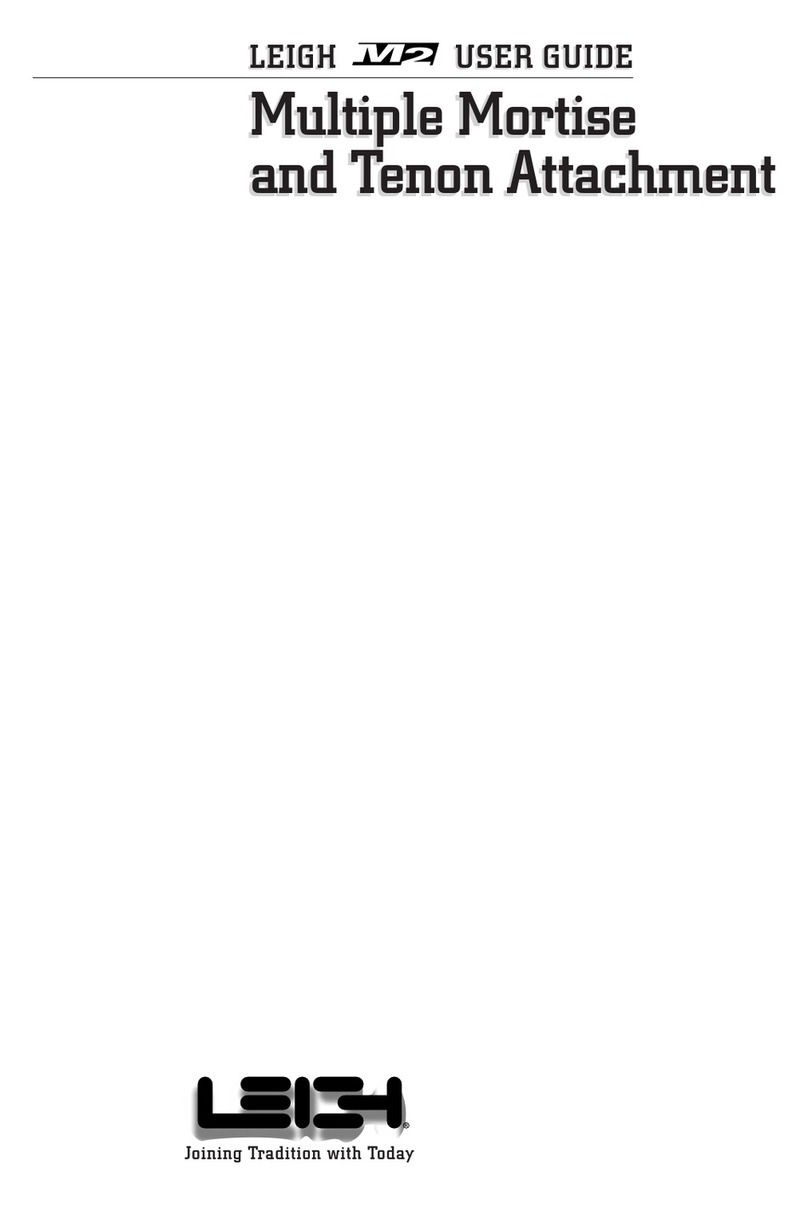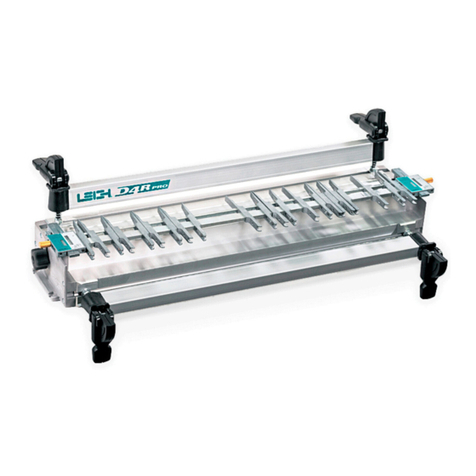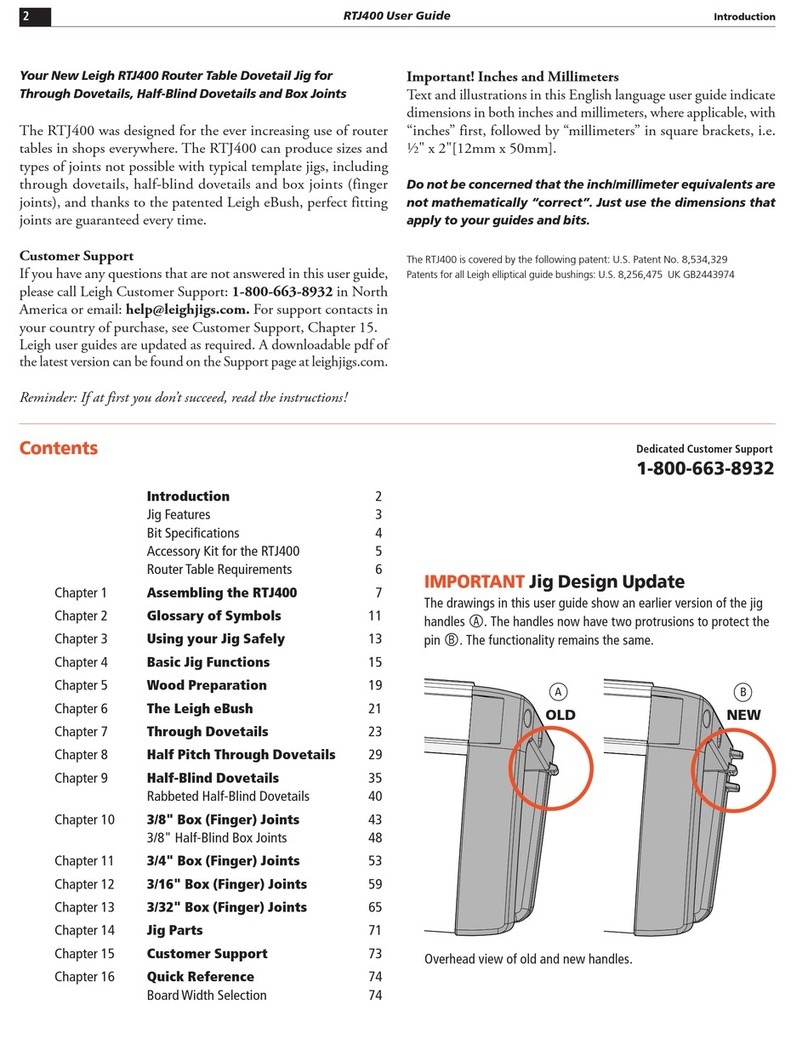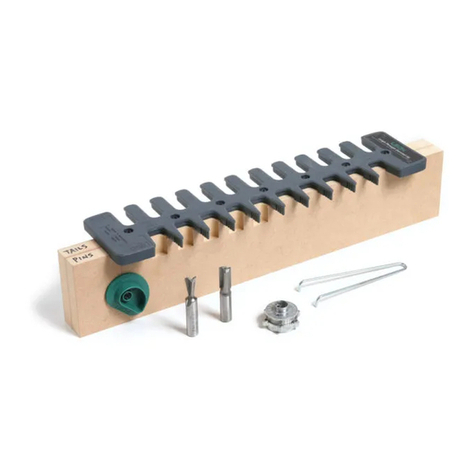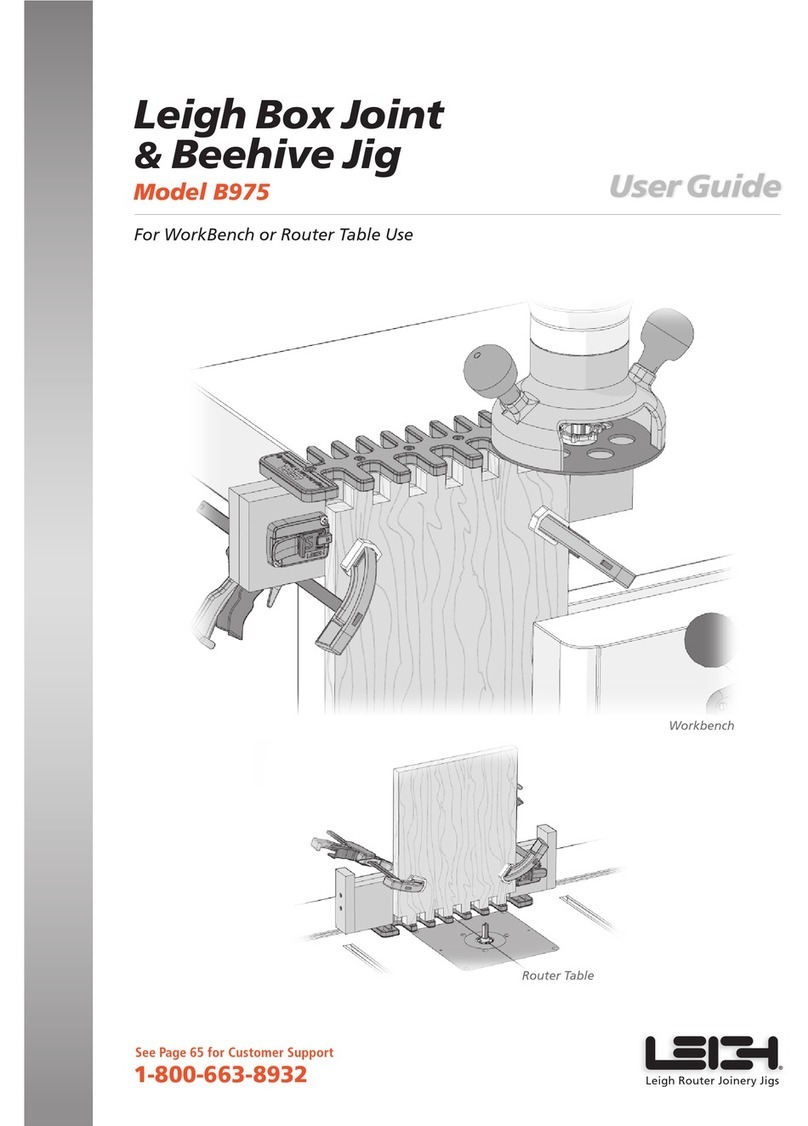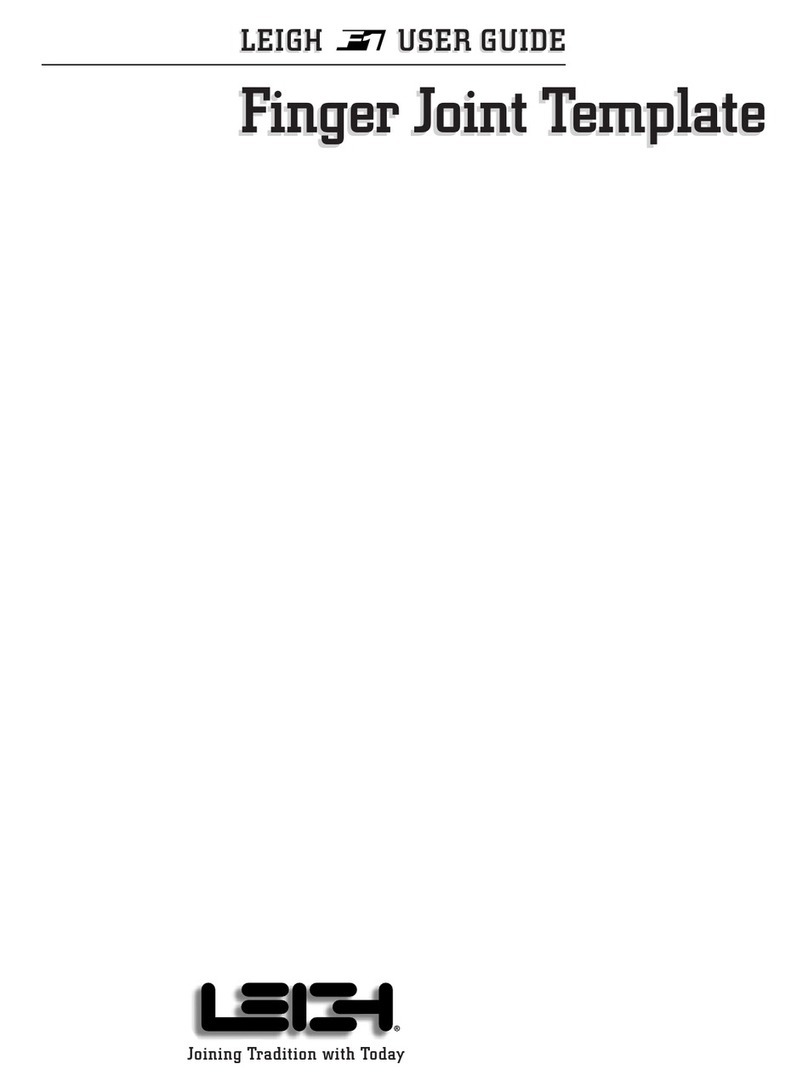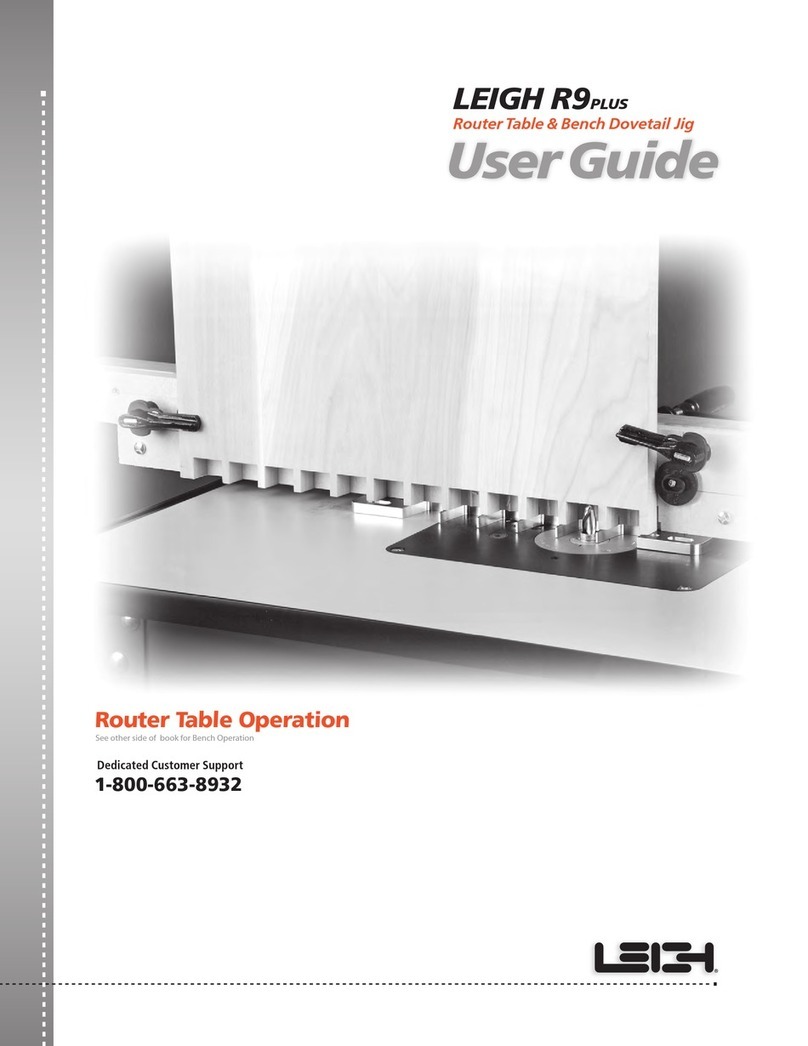
iii
CONTENTS AND STANDARDS D4R Pro User Guide
Your New Leigh D4R Pro Dovetail Jig
Congratulations! You now own the world’s most useful and versatile dovetailing tool. The Leigh D4R Pro Dovetail
Jig will help you rout an infinite variety of joints, and all of its major functions are described in detail in this guide.
A very helpful DVD is also included, but the guide is essential reading.
Important! Inches and Millimeters
The D4R Pro jig can be ordered in inch or metric versions.
They’re identical except for the calibration scales. This Leigh
English-language user guide shows measurements in both inches
and millimeters, with “inches” first, followed by “millimeters”
in square brackets.
Example:
3⁄4"x 51⁄2"x8" [20x140x200mm]
Do not be concerned if the inch/millimeter equivalents are not
exact. Just use the dimensions which apply to your jig.
To simplify the instructions, most jig illustrations show a jig
considerably shorter than the standard 24"[610mm].
Where finger assembly scales overlay an illustration, the “inches”
scale will be at the top, and “millimeters” scale at the bot-
tom. Only the right hand “active” half of the scales are illustrated.
For clarity, setting positions are indicated with a red line in the
guide only. On the jig, the lines are black.
We recommend that you first assemble and mount the jig,
carefully following the instructions in the first section of the
guide. Then read the rest of the guide, following along with the
basic functions and principles of operation, before you try to
do any actual joinery routing. By all means, rout a few practice
joints in scrap boards before you use the jig to rout a precious
hardwood workpiece!
If you have any questions that are not answered in this guide,
please contact Leigh customer support:
But remember: “If at first you don’t succeed, read the instruc-
tions!”
*See Appendix IV – Customer Support

